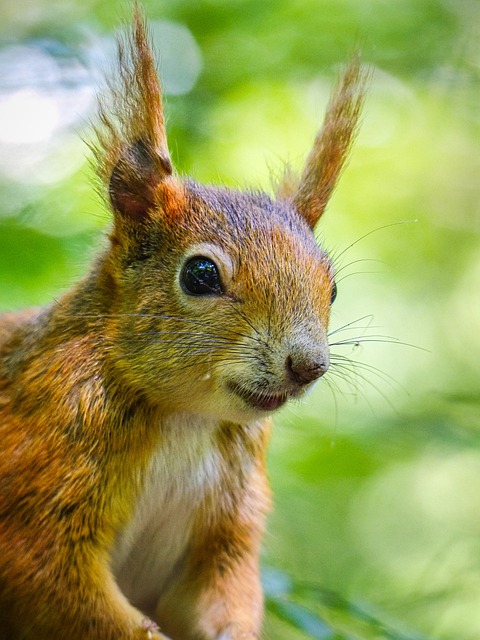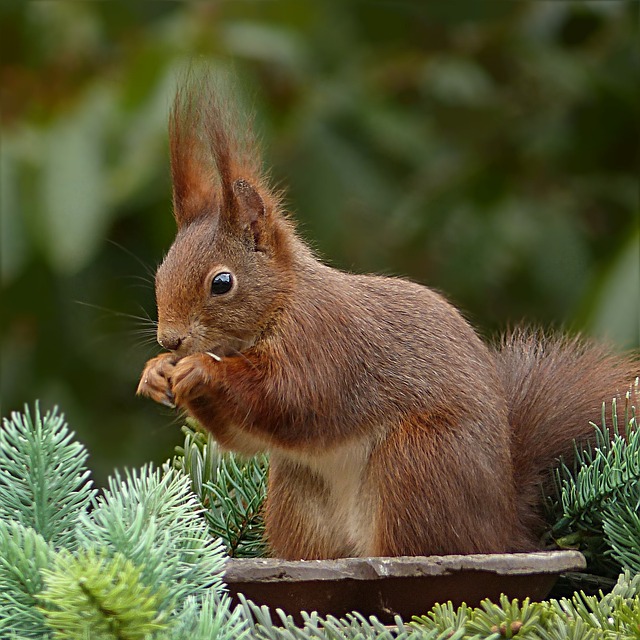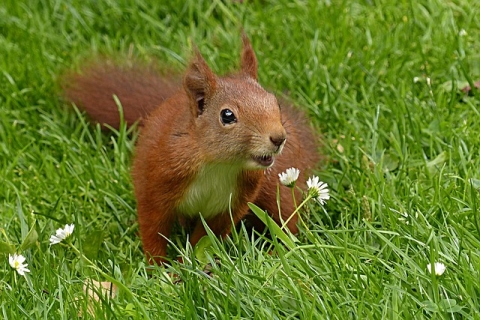
Source: Pixabay
Red squirrel (Sciurus vulgaris)
|
Size |
|
|
Weight |
|
|
Diet |
|
|
Habitat |
|
|
|
|
| Kingdom |
|
| Phylum |
|
| Class |
|
| Order |
|
| Family |
|
| Genus |
|
| Species |
|
The common squirrel is widespread in Slovenia from the coast to the forest border. It lives in different types of forests across Europe and Asia. It can be recognised by its red to brown fur and slightly darker and bushy tail. The belly is always white. It has tufts of hair on its ears, which are longer in winter. The rodent can grow up to 25 cm in length, with a tail almost as long as the body. It weighs between 250 and 400 grams.
It feeds on the seeds of spruce, pine, and fir trees, so you might see it using its sharp incisors to tear apart cones and shells to access the seeds. It also eats young plants, mushrooms, berries, and even bird eggs.
The squirrel is mostly a solitary animal with no defined territory. If you're lucky, you might come across a squirrel squabble, when the little animals measure their strength by growling, fluffing their fur, and flicking their tails.
Each squirrel has one or more nests. They make their nests out of branches and line them with moss and grasses. It often settles in abandoned crows' nests or makes its home in a tree hollow.

Source: Pixabay

Source: Pixabay
As soon as possible, he starts gathering food for the winter. In autumn, he buries the seeds and fruits, hiding them in cracks and tree hollows. Every few days during the winter, he comes out of hiding to look for his supplies. Because squirrels forget their food stores, they often die in winter.
The squirrel mates twice a year - in February-March and in summer in June-July. After a month and a half, the squirrel usually gives birth to 3 to 7 blind and hairless young, which nurse for 7 to 10 weeks.
In the wild, this red-brown rodent lives for 3 to 7 years, longer in captivity. It has many natural enemies. The squirrel is hunted by birds of prey, foxes, pine martens, and other animals. To avoid becoming prey, it is more active early in the morning at dawn, and late in the afternoon and at dusk.
DID YOU KNOW?
- The squirrel is protected in our country, so hunting it is not allowed.
- In Europe, the squirrel is most threatened by the grey squirrel, which is native to North America and was introduced to Europe by man.
- The squirrel can also swim.
- The squirrel makes short, muffled sounds. We say that the squirrel chatters.

